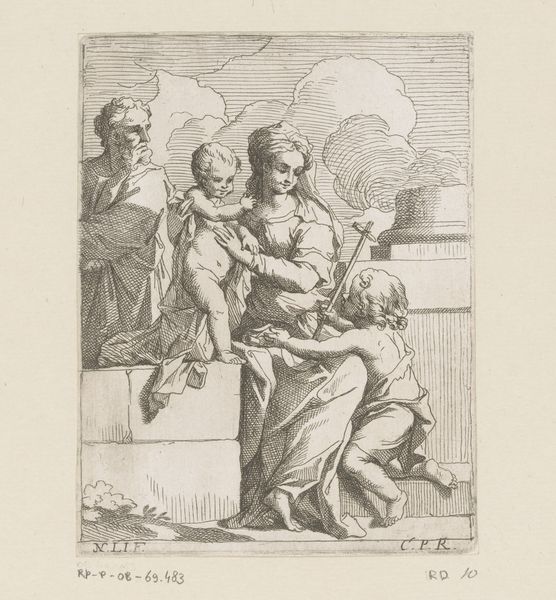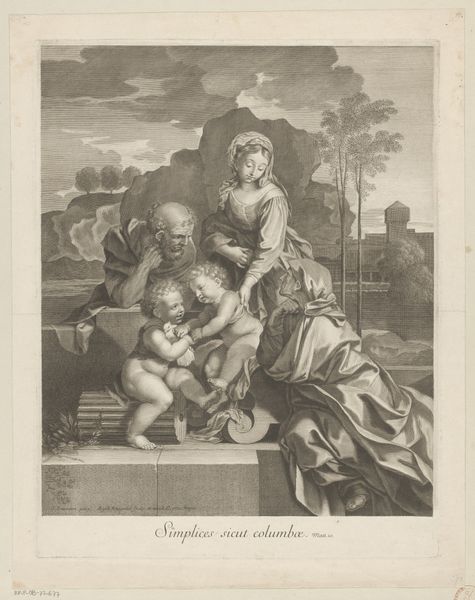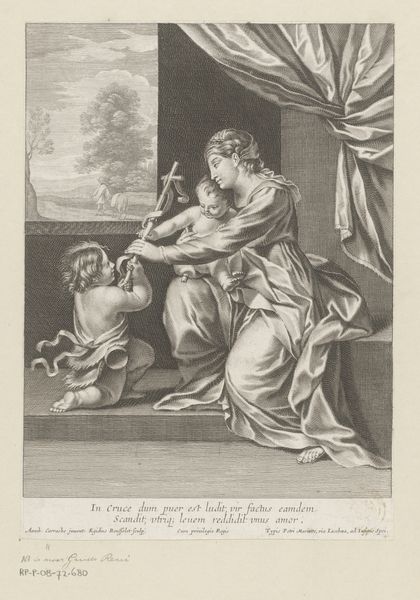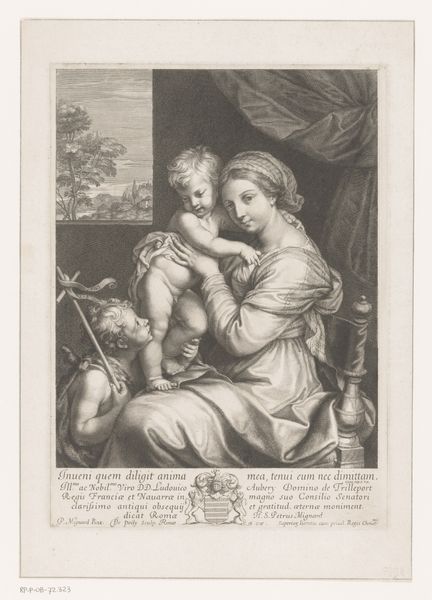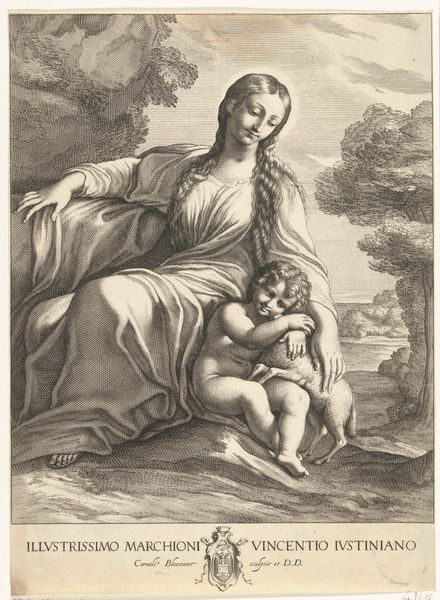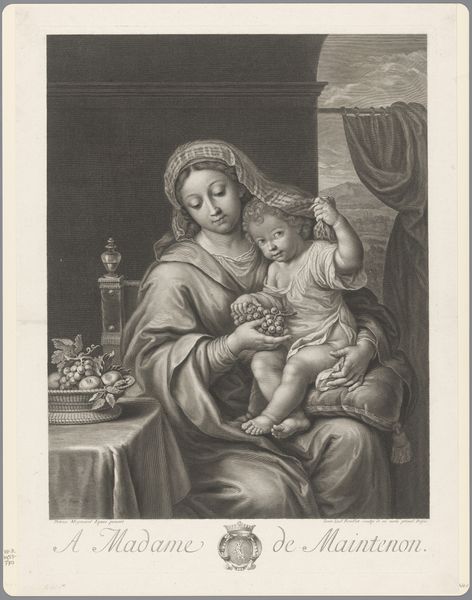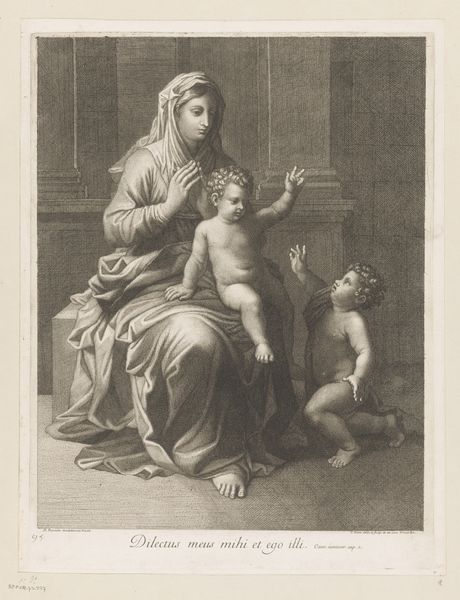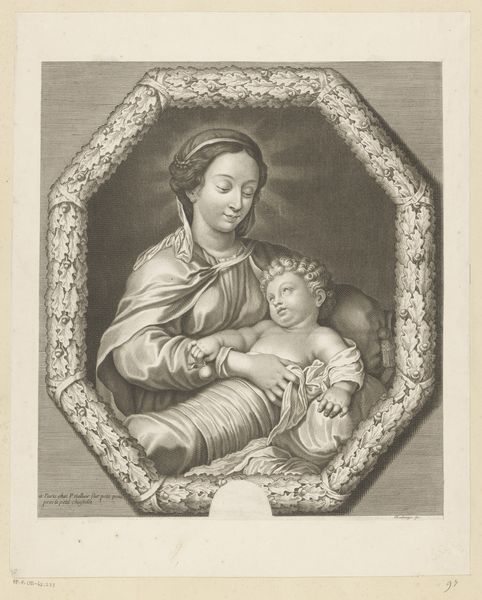
#
pencil drawn
#
aged paper
#
wedding photograph
#
photo restoration
#
old engraving style
#
historical photography
#
old-timey
#
yellow element
#
19th century
#
golden font
Dimensions: height 460 mm, width 386 mm
Copyright: Rijks Museum: Open Domain
Editor: Here we have "Maria met het Christuskind en Johannes," dating somewhere between 1661 and 1704, by Guillaume Vallet. It looks like an engraving on aged paper. I find the composition quite classical, almost stoic in its stillness. What stands out to you as you look at this piece? Curator: Immediately, I’m drawn to the material conditions of its creation. We see an emphasis on line and the craft of engraving. Consider the engraver, likely working within a workshop setting, replicating and disseminating religious imagery for a specific market. Who commissioned this piece? Where was it sold? These questions speak to the broader social context. Editor: So you see the artistic skill involved in making this engraving but you wonder if it might be considered more of a printed reproduction destined to popular devotion? Curator: Exactly. Let's not forget the paper itself – the "aged paper," as you called it. What type of paper was it? Was it locally sourced? Its quality, its texture - all hint at the intended audience and its price point. These details connect the image to trade networks and the consumption habits of the time. Editor: That makes me wonder how much the material used dictated the overall look, and maybe even the value people assigned to the piece. How does this kind of perspective challenge our ideas of what is "high art?" Curator: By focusing on process, labor, and consumption, we move beyond simply appreciating the image and dive into the network of individuals involved in creating it. It asks us to consider the conditions of artistic production, pushing past the idea of a singular, inspired genius. Editor: This gives me so much to think about. It's not just the finished image, it’s about understanding art as a form of production within its time. Curator: Precisely! And hopefully that sheds some new light on this "still" image.
Comments
No comments
Be the first to comment and join the conversation on the ultimate creative platform.




